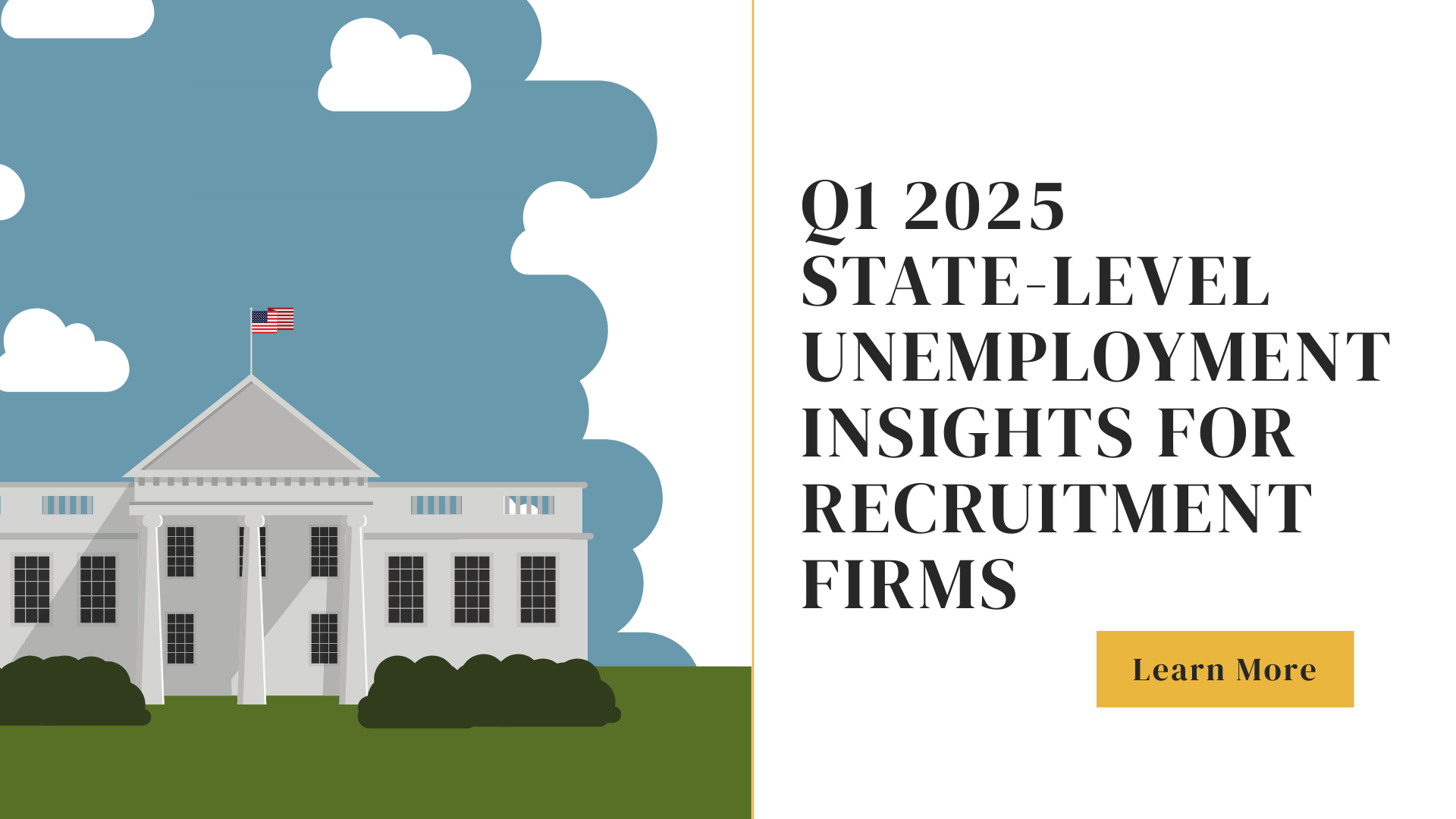As Q1 2025 wraps up, the U.S. Bureau of Labor Statistics (BLS) offers a snapshot of a labor market marked by cautious stability, modest shifts, and regional nuances. For recruitment firms and employer of record (EOR) service providers, understanding these trends is more than just an economic update – it’s a strategic necessity. Whether you’re advising clients on talent mobility, managing onboarding volumes, or expanding into new territories, knowing where employment is growing – or shrinking – can shape hiring priorities.
January 2025
Unemployment rates were higher in 1 state and stable in 49 states and D.C. compared to December. Over the year, 32 states had jobless rate increases.
States with statistically significant unemployment rate changes from December 2024 to January 2025, seasonally adjusted.
State |
December % |
January % |
Over-the-month change |
Pennsylvania |
3.7 |
3.8 |
0.1 |
Nonfarm payroll employment decreased in 4 states and was unchanged in 46 states and D.C.
States with statistically significant employment changes from December 2024 to January 2025, seasonally adjusted.
State |
December |
January |
Over the month change - level |
Over the month change % |
Georgia |
4,984,300 |
4,956,100 |
-28,200 |
-.6 |
Indiana |
3,270,200 |
3,257,600
|
-12,600 |
-.4 |
Missouri |
3,000,000 |
2,982,800 |
-17,200 |
-.6 |
West Virginia |
716,100 |
712,100 |
-4000 |
-.6 |
February 2025
Unemployment rates were higher in 1 state (Florida) and stable elsewhere. The national jobless rate held at 4.1%, slightly up from the previous year. Payroll employment increased in 3 states, unchanged in others.
States with statistically significant unemployment rate changes from January 2025 to February 2025, seasonally adjusted.
State |
January % |
February % |
Over-the-month change |
Florida |
3.5 |
3.6 |
0.1 |
Nonfarm payroll employment increased in 3 states and remained unchanged in 47 states.
States with statistically significant employment changes from January 2025 to February 2025, seasonally adjusted.
State |
January |
February |
Over the month change - level |
Over the month change % |
Missouri |
2,981,400 |
2,993,900 |
12,500 |
.4 |
New Jersey |
4,382,800 |
4,402,000 |
19,200 |
.4 |
Ohio |
5,658,000 |
5,681,100 |
23,100 |
.4 |
March 2025
Unemployment rose in 3 states and dropped in 1 (Indiana). The national jobless rate held steady at 4.2%. Payroll employment grew in 6 states.
States with statistically significant unemployment rate changes from February 2025 to March 2025, seasonally adjusted.
State |
February % |
March % |
Over-the-month change |
Connecticut |
3.4 |
3.6 |
0.2 |
Indiana |
4.3 |
4.1 |
-.2 |
Massachusetts |
4.3 |
4.4 |
.1 |
Virginia |
3.1 |
3.2 |
.1 |
Nonfarm payroll employment increased in 6 states and was essentially unchanged in 44 states and the District of Columbia.
States with statistically significant employment changes from February 2025 to March 2025, seasonally adjusted.
Unemployment Summary
Across the first quarter, unemployment rates remained largely stable nationwide, with only minor month-to-month shifts indicating a steady labor market. January and February saw minimal significant changes, while March showed a slight softening. Overall, national unemployment edged up slightly to 4.2% by the end of the quarter.
Year-over-Year Summary
Unemployment is still trending higher compared to 2024, with 28–32 states seeing increases year-over-year throughout the quarter. States like Michigan (+1.3 to +1.4 percentage points) and Mississippi (+1.0 to +1.1 points) posted the largest jumps.
Employment Summary
Nonfarm payroll employment saw modest but notable fluctuations over the quarter, reflecting movement in job creation. January and February showed limited growth, with only a handful of states posting significant gains. By March, momentum picked up, with several states experiencing more robust job increases, which suggests a slight strengthening in employment trends toward the end of the quarter.
Top Performing States Over the Year
Texas (+192,100), Florida (+135,000), and New York (+126,200) posted the largest annual job increases. While Idaho, South Carolina, and Utah saw the biggest percentage gains—between +1.9% and +2.7%.
Why this matters to recruitment firms
Unemployment rates signal potential challenges in certain talent markets as higher unemployment could mean a more available labor pool but also signal underlying economic pressures impacting hiring demand.
Employment rates on the other hand, show states that are prime targets for recruitment expansion and candidate sourcing, especially in fast-growing sectors.
